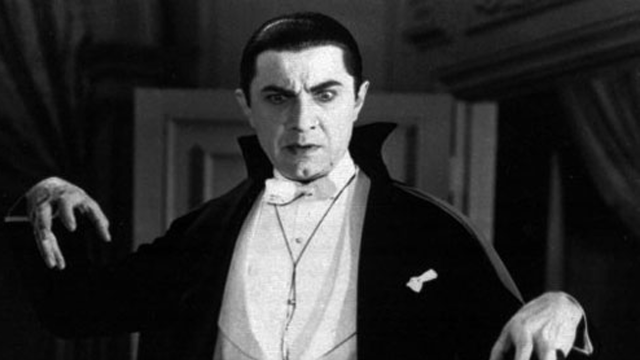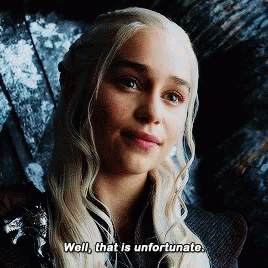The classics get a bit of a bad rap these days. People say they’re too dry, too bland, or not up to modern standards. And while sometimes that’s true – I can’t pretend all classic works hold up in the harsh light of modernity – so many still are just great books. You have to adapt to a different pacing and some archaic terminology, but once you do…there are reasons that the greats are “the greats.”
Here’s a few of my favorite, with the reason why the modern reader might struggle with it.
1) Slow Boil – Frankenstein and Dracula
Two of the three greats of Gothic Horror (the third, everything by Edgar Allen Poe, is comprised of short stories so holds up really well), Frankenstein and Dracula are immensely atmospheric books that absolutely should be read by anyone who loves Science Fiction and Fantasy. The thing is, everyone thinks they know these stories from the movies and the modern adaptations, but the books differ immensely from the stories you think you know. For example, Frankenstein’s monster is intelligent, articulate, and doesn’t look disgusting besides his inhuman eyes.

Why they’re hard: Pacing
Most modern books hit the ground running and don’t let up. Even books that do have a slow boil by modern standards – John Scalzi’s Old Man’s War comes to mind – still hit you with something fantastic or gripping right from the get-go. Frankenstein and Dracula only hint that there is something gripping coming. Both novels are written in the epistolary format, so what you’re reading are a series of letters. Frankenstein begins with an explorer traversing the arctic, and Dracula begins with a man going to resolve a real-estate dispute. Neither grabs you from the get go – it expects you to settle in for the long haul.

Why you should read them: Revolutionary
Once you get in the right headspace, however, you’ve got some absolutely fantastic tales in store. Both books basically invented or reinvented a genre. Frankenstein is widely considered the first science fiction novel – because it is, at least as we understand the genre – and a lot of the tropes we now know and love from science fiction were established here. Seriously, pretty much any modern “robot rebellion” or “AI gone rogue” story can trace its ancestry back to Shelly’s seminal work, as can any story with a mad scientist or where man playing God with science is responsible for his downfall. Also, I just want to note here – Science Fiction, as a genre, was invented by a 17 year old girl. That…gets forgotten a lot in the discourse around the genre, and that’s a damn shame. Wells, Clark, and Asimov expanded the genre, but Shelley is the one who created it.
Meanwhile, Dracula didn’t invent a whole genre – horror novels existed at the time already, and vampires were not a new concept in 1897. However, it reinvented the genre with two big things. First, it basically codified vampires as we know them now. Prior to the novel, vampires had a wide array of traits and didn’t always adhere to the strengths and weaknesses we’ve come to know, but Dracula laid it out in such a clear-cut way that vampire fiction since has used it as a jumping off point. (Although some traits, like obsessive counting of rice and being unable to leave their grave if a rose is left on it are sadly forgotten.) That’s the contribution everyone remembers. What’s often forgotten is the other trope Dracula established – the horror coming to the heroes. Previously, it was the standard for heroes to go to the scary place, deal with the scary thing, and go home safe and sound. Dracula codified the idea that home is not safe and horror can happen there.
They’re both phenomenal books that deserve a read.
2) Retroactively Generic – Asimov, Wells, and Burroughs
While Mary Shelly was the mother of science fiction, Isaac Asimov, H.G. Wells, and Edgar Rice Burroughs were her literary sons that expanded on her legacy. (Some people call these authors the fathers of modern Science Fiction, but I don’t feel like that gives Shelley enough credit.) Still, if Mary Shelley created many of the tropes we know these days, these three authors created or codified the rest of them save one, which we’re going to get to in the next entry.
Why they’re hard: Tropes became clichés

So here’s the interesting thing about the words genre and generic – they’re often related. Any genre that becomes well enough entrenched will eventually start seeming generic by association, and it’s tropes will become clichés given enough time. If you know modern science fiction, you know these words. War of the Worlds was the progenitor of every alien invasion story. The Barsoom series was the birth of every “human on an alien world” story. The Foundation series gave birth to space opera. The Time Machine was the foundation of…well, time travel. I could go on and on, but you get the point.
This isn’t the same for Dracula and Frankenstein. While the former gave us vampires and the latter gave us the mad scientist, vampires have become sex symbols somehow and mad scientists tend to create robots, not reanimated corpses. They don’t feel generic anymore. For the three authors of this section, however, you can still feel their influence more directly.
Why you should still read: Find out where they came from
Did you ever wonder why so many space opera stories have a planet that is an entire city? That’s an Ecumenopolis, and it was codified in the Foundation series by Isaac Asimov. Want to know the origin of “Person on alien world gets power due to world’s unique properties?” Long before Clark Kent was leaping tall buildings in a single bound, John Carter was doing the same thing on Barsoom because of Mar’s weaker gravity. Did it seem odd to you that the aliens of Independence Day and Signs were defeated by a computer virus and water, respectively? Well, it’s in part because in War of the Worlds they were defeated by the common cold.

Reading these books is like looking at extinct animals of the Ice Age or even the era of Dinosaurs – they’re the evolutionary ancestors of so many things we know today, and it’s absolutely fascinating to see how the tropes evolved over the decades. And, just like those extinct animals, they’re incredibly intriguing in their own right. It’s absolutely worth seeing where they came from and how we got here, and the books all hold up on their own. Just go in with the knowledge that a lot of the tropes you’ve seen subverted, reimagined, and twisted in modern science fiction get played absolutely straight here.
3) Really, really, really racist – Lovecraft
Cosmic horror was absolutely revolutionary at the time. The idea that horror came from things the human mind couldn’t understand or properly codify has become a genre staple at this point. Alien entities from beyond our modern understanding of physics or even sanity were Lovecraft’s brainchild, and while he wasn’t groundbreaking in his time his legacy lives on in so much of our horror to this day.
Why it’s hard: So much racism.
Let me just give you an unedited description of a character from Lovecraft’s best known work, The Call of Cthulhu. A man in the book is described as “an Arab with a hateful Negroid mouth.”

If you feel the need to shower, that’s normal. I felt dirty just transcribing that line.
A lot of people defend this by saying “Well, it was a different time,” but Lovecraft was writing in the 1920’s. While the civil rights movement was still 40 years away, there were plenty of authors writing at the time that didn’t view non-whites as sub human. Pretty much any time a nonwhite character appears in Lovecraft’s books, they’re the villain. I think that there are non-villainous examples from The Curious Case of Charles Dexter Ward, but don’t quote me on that.
Now, in full fairness to Lovecraft, he wasn’t just afraid of anyone who wasn’t white. He as also afraid of white people who were not “well bred” (English. He means English by this), pretty much any new discovery in science including non-Euclidean geometry, the planet Pluto, the electromagnetic spectrum, and air conditioning. The man was a bundle of phobias loosely held together by other phobias.
Oddly enough, he’s not really sexist either, mainly because women barely exist in his books except when they’re fainting or giving birth to cosmic horrors. I realize I just said he wasn’t sexist. I now think that was a very stupid thing to say.

I tend to not buy books by authors who have views I find reprehensible, because I don’t want to give them money. In Lovecraft’s case, however, he’s super dead so I don’t mind buying them. I’m not going to tell you to look past the racism like I did with slow pacing and clichés for the earlier entries, I just believe they still have literary merit in spite of being really, really uncomfortable. Just make sure you’re braced for it. There’s a cat in one story named “N-word Cat”. Lovecraft did not write “N-Word.”
…maybe be careful reading these books on your work computer. Or in public.
Why they’re worth reading: Cosmic Horror Done Right
You know what I love about modern cosmic horror? It’s usually not racist. That’s…that’s a huge plus. You know what I’d like to see modern cosmic horror adapt from Lovecraft? Pretty much everything else besides the racism.
See, if you’ve read most modern cosmic horror, you got to the part where they actually encounter the unimaginable evil and the following scene ensues. “It was impossible to put words to. The creature moves in unnatural ways, it’s shapes strange and unknowable, it’s proportions distorted and bizarre. Hero McHeroson could feel his sanity slipping away at the sight.” And…when done well, that’s okay. If you build it up enough, it does a good job of setting the tone. If the author does describe it, it’s usually just a mass of tentacles, eyes, and mouths.

However, Lovecraft himself didn’t do that. His unknowable horrors were still described in clear detail. There’s a reason it’s so easy to find art of Cthulhu and the Mi-Go and Shoggoths and Shub-Niggurath. (Also, after writing on how racist Lovecraft was, I’m now squinting at that last name really uncomfortably.) Lovecraft detailed exactly how these things looked, often with scientific dispassion. It works because after he does that, at some point, he’ll give you something else that he’ll barely describe – and in those cases, we’ll still get a description, but it’s from the rambling of someone whose mind was shattered with the revelation. The juxtaposition of the terrible things we have described with something so much worse that it drives men insane is a really effective way of highlighting the horror.
That, to me, is the essence of cosmic horror. It’s not waving your hand to hide the monstrosity, it’s defining awful things and then pointing out there’s even worse out there. It’s not in the unknowable, it’s in knowing things and holding on to sanity by a thread before encountering something beyond. So much modern cosmic horror misses that point, and it really is effective to see it done right.
Just make sure you know what you’re in for.
Don’t forget to read Rumors, a free prequel to my first novel, in time for the release of the sequel!

Well said..
LikeLiked by 1 person